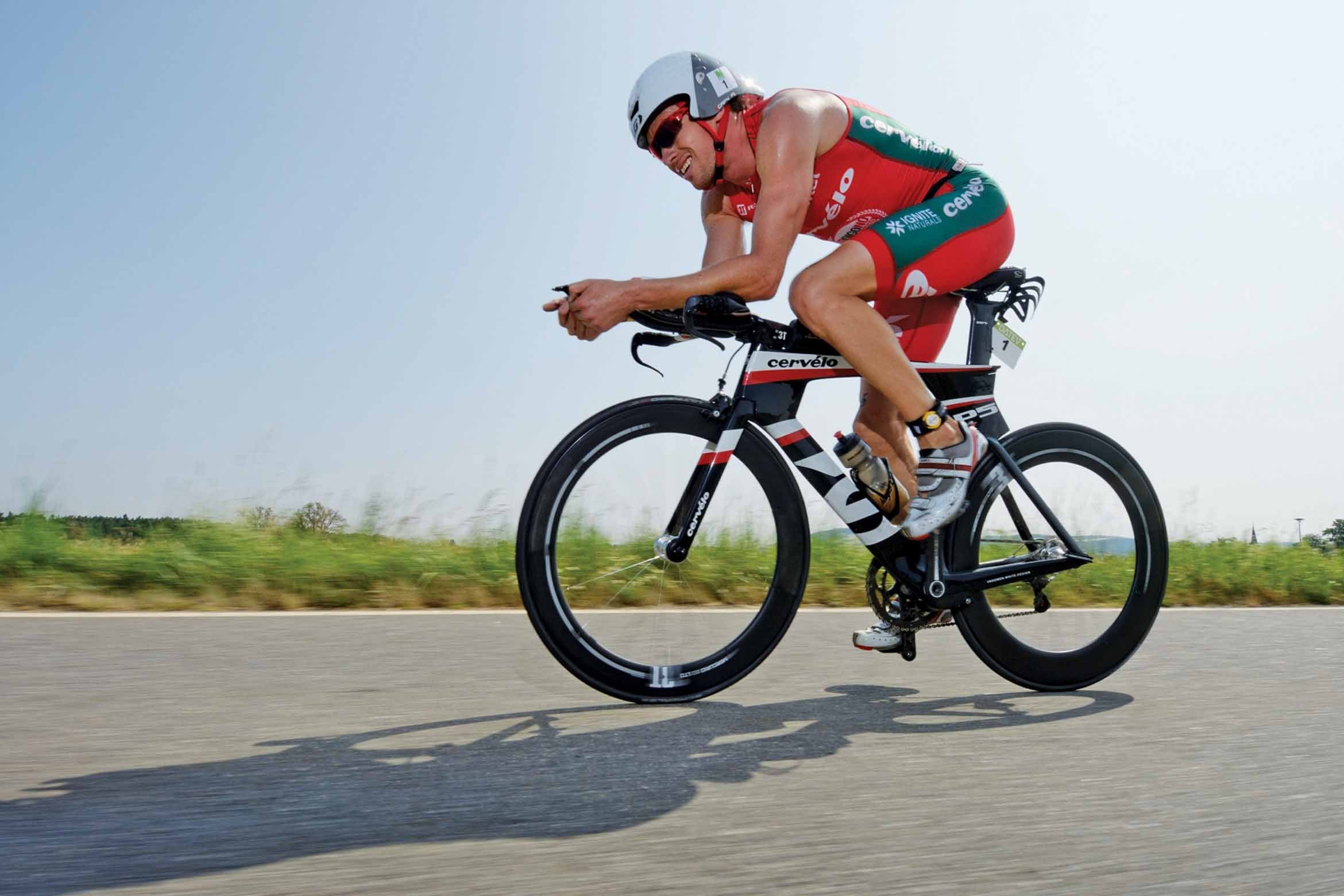Lessons From The Wind Tunnel

Photo: Michael Rauschendorfer/Endurapix
Gain speed without compromising your run using this insight gleaned from the wind tunnel.
In addition to building some of the most aerodynamic road and tri bikes and sponsoring a top-level cycling team, Cervélo helps some of the world’s best riders get even faster by applying its expert testing and improving aero performance. Cervélo’s senior advanced R&D engineer Damon Rinard conducted a series of wind tunnel tests on a group of cyclists to determine the savings of two common fit changes—lowering the handlebars and narrowing the elbows. Here’s what Cervélo found in this previously unpublished test data.
RELATED – Wind Tunnel Tested: Five Aero Wheelsets
Position change: Lowering aerobars by 1 centimeter
Subjects: 5 pro cyclists
Results: Rinard says there was a “strong correlation” between a lower position and reduced drag, even for athletes with positions that were already very aggressive.
The numbers: Dropping aerobars 1 centimeter saved 20 grams of drag at 30 mph, roughly equivalent to 3.5 seconds in an Olympic-distance bike leg for an athlete riding 20 mph.
Position change: Narrowing elbows and hands by 1 centimeter
Subjects: 3 pro cyclists, 1 tested at two different widths
Results: Three of four trials showed a big drag savings, but one rider’s drag increased.
The numbers: “The rough trend was a savings of 50 grams per centimeter narrower,” said Rinard about these specific riders. For a person averaging 20 mph, this would translate to 9 seconds saved over an Olympic bike split. Although the data is far from offering a universal conclusion that narrower is faster, some athletes do benefit from snugging their elbows in tighter.
Dropping the bars puts stress on the hips, low back and hamstrings—all critical for the final leg of a triathlon. Bringing aerobars narrower, however, only impacts the shoulders and upper back. With a little strength and flexibility training, you can adapt to a narrower position without jeopardizing your run.
RELATED: Prepare For Your Bike Fit
Follow Triathlete on Twitter @Triathletemag for inspiration, new workout ideas, gear reviews from our editors and more.